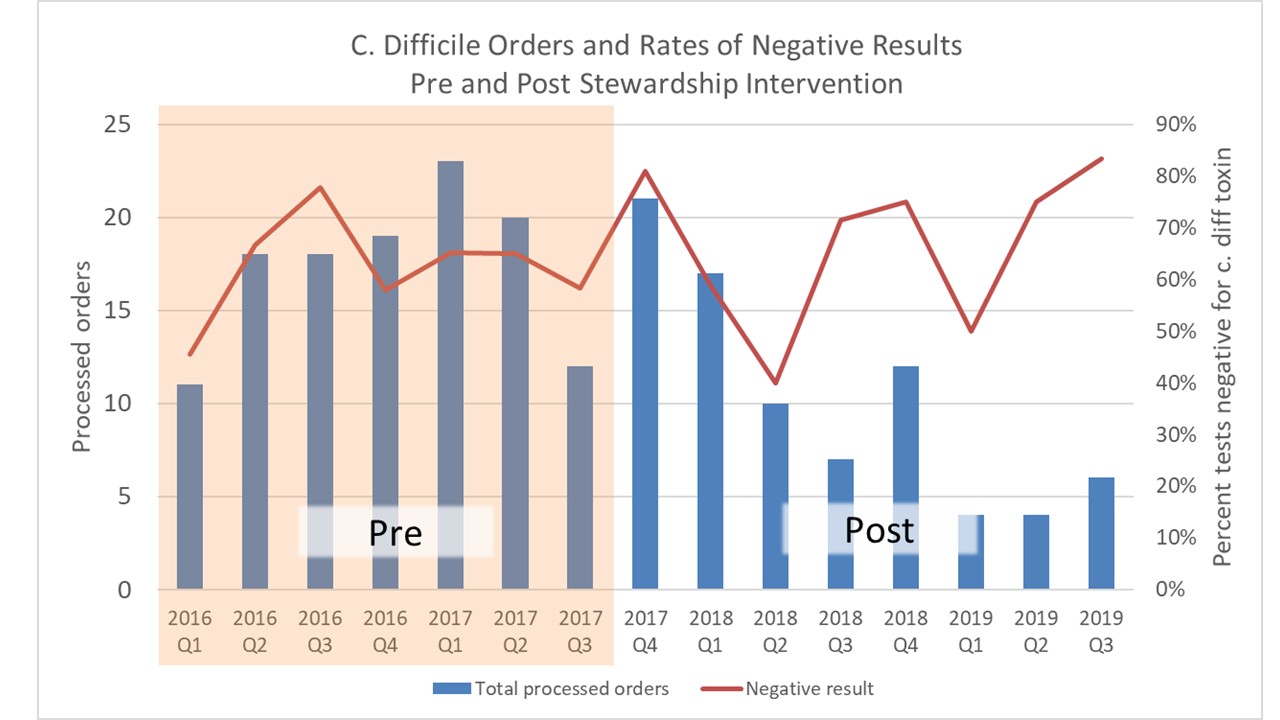Antibiotic Stewardship and Inpatient C. Difficile Testing in Solid Organ Transplant Recipients, the Value of Multi-Level Checks and Balances
University of Texas Medical Branch, Galveston, TX
Meeting: 2020 American Transplant Congress
Abstract number: 67
Keywords: Adverse effects, Immunosuppression, Infection, Kidney/liver transplantation
Session Information
Session Name: Antimicrobial & Diagnostic Stewardship in Transplantation
Session Type: Oral Abstract Session
Date: Saturday, May 30, 2020
Session Time: 3:15pm-4:45pm
 Presentation Time: 4:27pm-4:39pm
Presentation Time: 4:27pm-4:39pm
Location: Virtual
*Purpose: Diarrhea in the solid organ transplant recipient is a commonly encountered problem and is often multifactorial in etiology. Due to the combination of peri-operative antibiotic administration and the immunosuppressed status of transplant recipients, a high degree of suspicion for C. Difficile colitis is prudent. The purpose of this study is to demonstrate the association of an institutional integrated stewardship program with c. difficile testing practices after abdominal solid organ transplantation.
*Methods: Since 2015, at our institution, tests for c. difficile toxin have been routinely cancelled at the laboratory level upon reception of a sample of formed stool. In July 2017, an additional intervention was enacted requiring the ordering provider to answer a series of short questions within the electronic medical record prior to ordering. The questions were based on established c. difficile testing guidelines and were designed to stimulate thought about the justification of the test. No orders were cancelled based on the answers to these questions. The charts were reviewed of all abdominal organ transplant recipients on whom a c. difficile toxin test was ordered between January 2016 and September 2019.
*Results: 370 tests were ordered on 172 patients during the study period. 166 orders were cancelled for various reasons including the presence of a formed stool specimen, leaving 204 processed c. difficile tests on 131 patients. Demographics and length of stay were similar between the pre- and post-intervention eras [median age: 58 vs 59 yrs, p=0.86; median LOS: 12 vs 11 days, p=0.93]. Quarterly rates of negative tests were similar between the pre- and post-intervention eras [median (range), 65% (45-78) vs 73% (40-83), p=0.38]. The number of orders for c. difficile toxin per quarter significantly decreased in the post-intervention era [median (range), 18 (11-23) vs 8.5 (4-21), p=0.038].
*Conclusions: In conclusion, although no orders were blocked based on the responses our short list of questions, this multi-level intervention was associated with a 47% decrease in c. diff testing without effecting the rate of negative testing. These results suggest we have achieved a significant cost savings (testing and isolation) without sacrificing critical aspects of clinical care. Future interventions will be aimed at decreasing the negative testing rate.
To cite this abstract in AMA style:
Kueht M, Britt R, Ferren R, Mujtaba M, Ramirez R, Kulkarni R, Lea A, Fair J, Reynoso D. Antibiotic Stewardship and Inpatient C. Difficile Testing in Solid Organ Transplant Recipients, the Value of Multi-Level Checks and Balances [abstract]. Am J Transplant. 2020; 20 (suppl 3). https://atcmeetingabstracts.com/abstract/antibiotic-stewardship-and-inpatient-c-difficile-testing-in-solid-organ-transplant-recipients-the-value-of-multi-level-checks-and-balances/. Accessed December 24, 2025.« Back to 2020 American Transplant Congress

